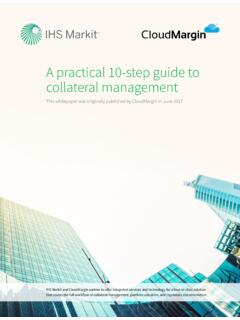Transcription of Introduction to Financial Accounting
1 Introduction to Financial Accounting First US Edition David Annand Adapted by Teresa Thompson Copyright 2018 David Annand Published by David Annand Box 308, Rochester AB T0G 1Z0 ISBN 978 1 989263 04 4 Library and Archives Canada Cataloguing in Publication Annand, David, 1954 This textbook is licensed under a Creative Commons License, Attribution Non commercial Share Alike USA: see This material may be reproduced for non commercial purposes and changes may be used by others provided that credit is given to the author. To obtain permission for uses beyond those outlined in the Creative Commons license, please contact David Annand at Latest version available at annand edd/ Please forward suggested changes to First US Edition July 31, 2018 Table of Contents 1.
2 Introduction to Financial Accounting 1 A. Accounting Defined 2 B. Business Organizations 2 C. Generally Accepted Accounting Principles 4 D. Financial Statements 8 E. Transactions Analysis and Double entry Accounting 13 Summary of Chapter 1 Learning Objectives 19 Concept Self check 21 Comprehension Problems 22 Problems 28 2. The Accounting Process 35 A. Accounts 36 B. Transactions Analysis Using Accounts 41 C. The Trial Balance 48 D. Using Formal Accounting Records 51 E. The Accounting Cycle 55 Summary of Chapter 2 Learning Objectives 57 Concept Self check 59 Comprehension Problems 60 Problems 72 3. Financial Accounting and the Use of Adjusting Entries 81 A. The Operating Cycle 82 B. Adjusting Entries 87 C.
3 The Adjusted Trial Balance 97 D. Using the Adjusted Trial Balance to Prepare Financial Statements 99 E. The Accounting Cycle 100 F. The Closing Process 101 Summary of Chapter 3 Learning Objectives 106 Concept Self check 111 Comprehension Problems 112 Problems 120 4. The Classified Balance Sheet and Related Disclosures 131 A. Financial Statement Disclosure Decisions 132 B. Classified Balance Sheet 134 C. Notes to Financial Statements 140 D. The Auditor s Report 144 E. Management s Responsibility for Financial Statements 145 Summary of Chapter 4 Learning Objectives 146 Concept Self check 149 Comprehension Problems 151 Problems 153 5. Accounting for the Sale of Goods 157 A. The Basics of Merchandising 158 B.
4 The Purchase and Payment of Merchandising Using the Perpetual Inventory Method 160 C. Merchandise Inventory: Sales and Collections Using the Perpetual Inventory Method 164 D. Adjustments to Merchandise Inventory Using the Perpetual Inventory Method 168 E. Merchandising Income Statement 175 F. Closing Entries for a Merchandiser Using the Perpetual Inventory Method 177 Appendix: The Periodic Inventory System 180 Summary of Chapter 5 Learning Objectives 192 Concept Self check 195 Comprehension Problems 196 Problems 202 6. Assigning Costs to Merchandise 215 A. Inventory Cost Flow Assumptions 216 B. Financial Statement Impact of Different Inventory Cost Flows 229 C. Lower of Cost and Net Realizable Value (LCNRV) 232 D.
5 Estimating the Balance in Merchandise Inventory 233 Appendix: Inventory Cost Flow Assumptions Under the Periodic System 237 Summary of Chapter 6 Learning Objectives 240 Concept Self check 243 Comprehension Problems 244 Problems 254 7. Cash and Receivables 265 A. Internal Control 268 B. Petty Cash 267 C. Cash Collections and Payments 270 D. Accounts Receivable 288 E. Notes Receivable 297 Summary of Chapter 7 Learning Objectives 298 Concept Self check 301 Comprehension Problems 302 Problems 307 8. Long lived Assets 319 A. Plant Assets 320 B. Depreciation 323 C. Disposal of Plant Assets 334 D. Accounting for Major Components and Subsequent Expenditures 335 E. Intangible Assets 339 F. Goodwill 342 G.
6 Disclosure 343 Summary of Chapter 8 Learning Objectives 343 Concept Self check 349 Comprehension Problems 351 Problems 359 9. Debt Financing: Current and Non current Liabilities 369 A. Current versus Non current Liabilities 370 B. Known Current Liabilities 370 C. Estimated Current Liabilities 379 D. Non current Liabilities 382 E. Demonstration Problem 387 Summary of Chapter 9 Learning Objectives 396 Concept Self check 399 Comprehension Problems 399 Problems 405 10. Debt Financing: Bonds 411 A. The Nature of Bonds and the Rights of Bondholders 412 B. The Bond Accounting Process 416 C. Bond Amortization and Interest 421 Appendix 1: Present Value Calculations 432 Appendix 2: The Effective Interest Method of Amortization 440 Summary of Chapter 10 Learning Objectives 446 Concept Self check 449 Comprehension Problems 450 Problems 455 11.
7 Equity Financing 463 A. The Corporate Structure 464 B. The Debt versus Equity Financing Decision 469 C. Recording Stock Transactions 471 D. Cash Dividends 478 E. Book Value 485 Appendix 1: Stock Dividends 486 Appendix 2: Retained Earnings 491 Summary of Chapter 11 Learning Objectives 494 Concept Self check 497 Comprehension Problems 499 Problems 507 12. Proprietorships and Partnerships 515 A. Proprietorships 516 B. Partnerships 520 C. Allocation of Partnership Profits and Losses 524 D. Admission and Withdrawal of Partners 529 E. Liquidation of a Partnership 536 Summary of Chapter 12 Learning Objectives 543 Concept Self check 545 Comprehension Problems 546 Problems 549 13. Financial Statement Analysis 555 A.
8 Introduction to Ratio Analysis 556 B. Liquidity Ratios: Analyzing Short term Cash Needs 560 C. Profitability Ratios: Analyzing Operating Activities 569 D. Leverage Ratios: Analyzing Financial Structure 573 E. market Ratios: Analysis of Financial Returns to Investors 576 F. Overall Analysis of BDCC s Financial Statements 579 G. Horizontal and Vertical Trend Analysis 580 H. Summary of Financial Ratios 584 Appendix: The Scott Formula 588 Summary of Chapter 13 Learning Objectives 599 Concept Self check 601 Comprehension Problems 602 Problems 611 14. The Statement of Cash Flows 617 A. Financial Statement Reporting 618 B. Preparing the Statement of Cash Flows 621 C. Interpreting the Statement of Cash Flows 635 Appendix: Preparing the Statement of Cash Flows Using a Cash Flow Table 637 Summary of Chapter 14 Learning Objectives 657 Concept Self check 659 Comprehension Problems 660 Problems 668 Index 679 CHAPTER ONE / Introduction to Financial Accounting First US Edition 1 CHAPTER ONE Introduction to Financial Accounting Chapter 1 Learning Objectives LO1 Define Accounting .
9 LO2 Identify and describe the forms of business organizations. LO3 Identify and explain generally accepted Accounting principles (GAAP). LO4 Identify and explain the uses of the four Financial statements. LO5 Analyze transactions using the Accounting equation. 2 CHAPTER ONE / Introduction to Financial Accounting First US Edition A. Accounting Defined Accounting is often called the language of business because it uses a unique vocabulary to communicate information to decision makers. In this chapter, we will discuss what Financial Accounting is and briefly introduce how Financial information is communicated through Financial statements. Then we will study how Financial transactions are analyzed and reported on Financial statements.
10 Accounting is the process of identifying, measuring, recording, and communicating an organization s economic activities to users. Users need information for decision making. Internal users of Accounting information work for the organization and are responsible for planning, organizing, and operating the entity. The area of Accounting known as managerial Accounting serves the decision making needs of internal users. External users do not work for the organization and include investors, creditors, labor unions, and customers. Financial Accounting is the area of Accounting that presents Financial information of interest to external users. This book deals with Financial Accounting . B. Business Organizations An organization is a group of individuals who come together to pursue a common set of goals and objectives.



